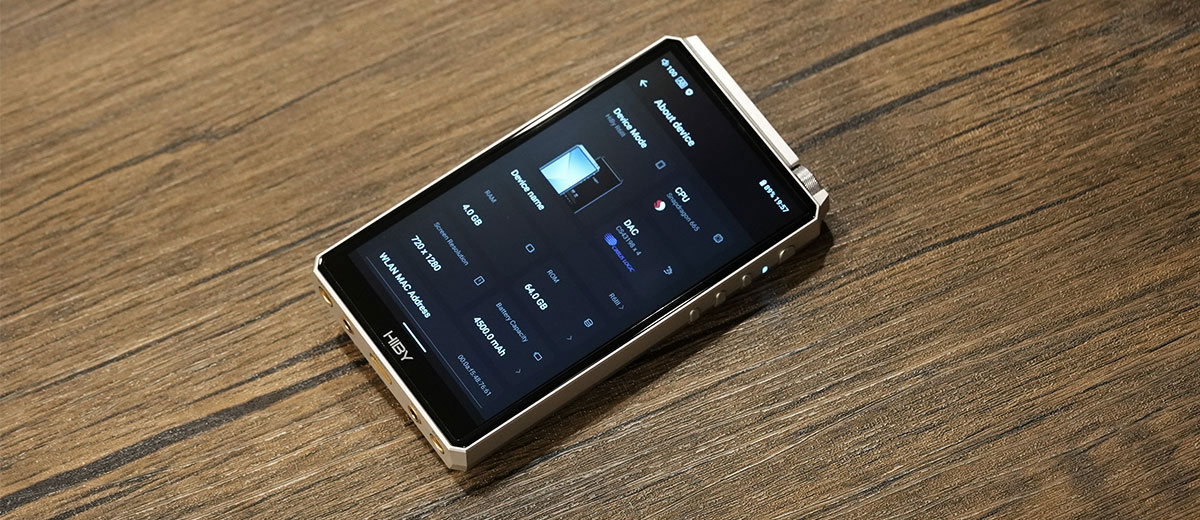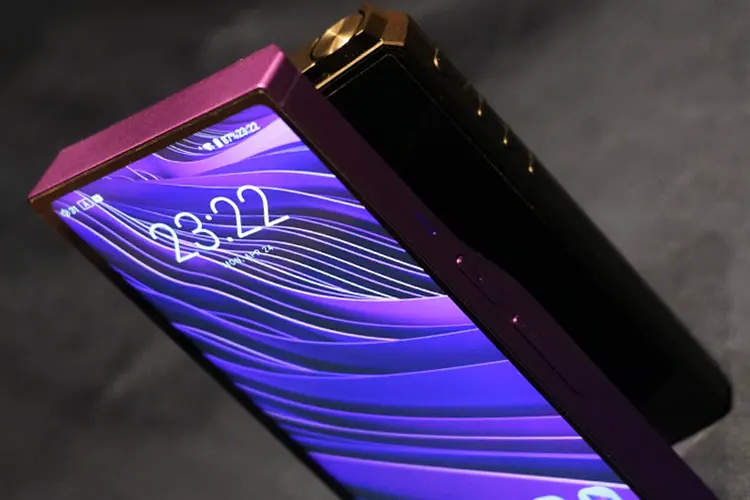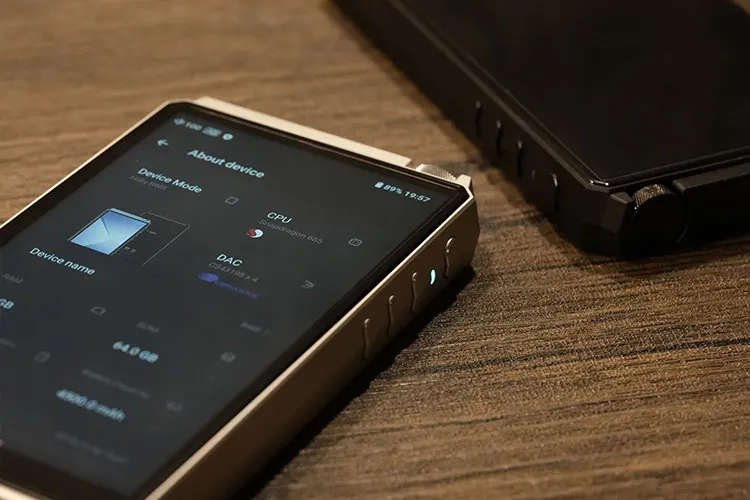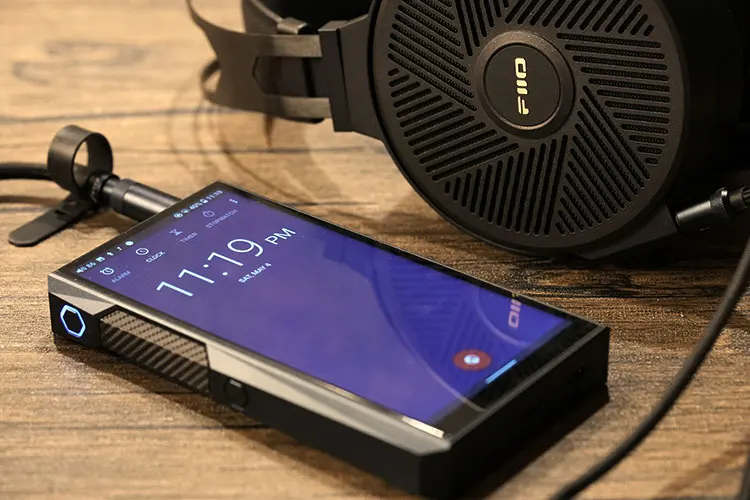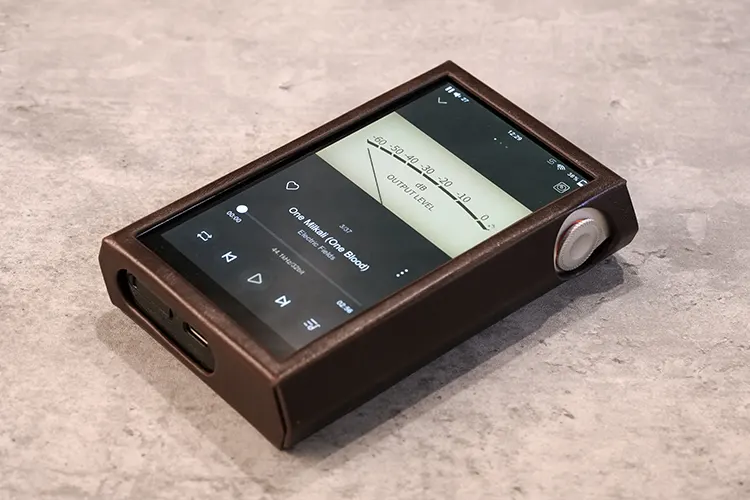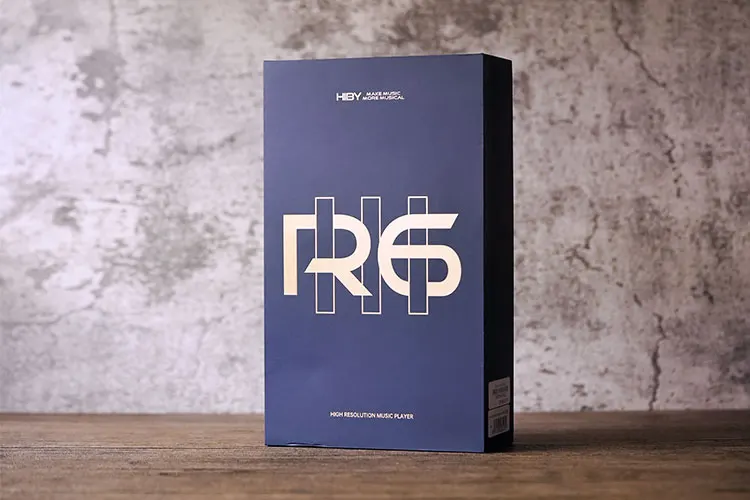Synergy
Power
With 405mW per channel in its balanced output, the R6 III 2025 doesn’t feel very strong in this domain. In practice, the new DAC implementation seems quite efficient in giving good density and speed to various IEMs even when paired with higher impedance gears.
Still, compared to some gears with higher output, with the more power-demanding IEMs you can tell the bass doesn’t kick as firm and deep but MSEB may come in handy to rectify the bass response.
At the highest gain, the background remains very quiet, likely due to the enhanced dynamic range and noise control from the previous R6 III.
Pairings
Using Class A mode and testing with Asian pop on the balanced output with the HiBy Yvain 4BA IEM (23Ω impedance), backing instruments in the midrange are well-separated from vocals.
The presentation is forward, with good upper-mid energy and enough midrange power to highlight details. Vocals are intimate, uncolored, and adequately full, with a slight upper vocal bump.
The bass is agile and controlled, delivering punchy notes with a quick decay—clean for unaccompanied voices and violins.
For rock or drums, especially outdoors, boosting the bass or treble with MSEB helps it sound fuller and more resolving. Without EQ, the R6 III 2025 still pairs well with streamed content, strengthening both ends of the spectrum.
With the Earsonics Elements (1+2 hybrid IEM), the bass gains air and richer decay, while the upper treble sharpens. The stage feels more expansive, and the slightly laid-back mids contribute to this.
The presentation is smoother but less detailed in the midrange than the Yvain. This pairing is engaging, with full bass that suits jazz and pop.
With the DUNU Falcon Ultra, the upper register is open, clear, and vivid. The bass is fast, punchy, and weighted, working well with EDM and electronic music. While clean, the treble naturally rolls off, and vocals remain energetic in the 5-6kHz range, adding presence.
The Falcon Ultra’s warmth and air complement the R6 III 2025, making it enjoyable for pop and bass-heavy genres like R&B.
Class AB mode feels marginally cleaner with the HiBy Zeta but doesn’t alter tonality as much as MSEB. Outdoors, AB mode extends battery life, while Class A with MSEB bass boost enhances smaller cans like the MOONDROP Joker.
Select Comparisons
HiBy R6 Pro II
Technical
The R6 Pro II runs on the same SoC and RAM so the OS experience is pretty similar, and both devices feature the A/AB mode switch.
It also comes with the higher-grade Dual AK4499EX x2 and AK4191 decoding chipsets which are more power-consuming.
The R6 Pro II decodes up to DSD1024 and PCM 32bit/1536kHz and has a 3.5Vrms max voltage swing on its balanced headphone phone output, marginally less than the 3.6Vrms on the R6 III 2025.
The SNR measures 119 dB SNR on the R6 Pro II, which is also lower than the 126 dB measuring on the R6 III 2025, and the noise floor is more than 50% less on the R6 III 2025.
Design
The R6 Pro II with a higher asking price is doubtlessly sleeker and features a nicer, larger, more pixel-packed screen.
On class AB mode the R6 III 2025 can play for 12 hours while the R6 Pro II can only do 7, which I think is one great advantage on the R6 III 2025 if you frequently travel with a DAP.
However, the R6 Pro II does not have a volume knob and when put in a leather case, all the details on the casing design are covered, though the contours and angular design on the R6 III 2025 are still visible.
Another note is the bigger buttons on the R6 III 2025, which makes it easier to press than on the R6 Pro II.
Performance
The specs on the R6 III 2025 surpass the higher tier R6 Pro II in some areas, while their output power seems similar. In practice, the two devices sound quite different in signature.
The R6 Pro II still excels in terms of weight of notes and recovery speed while delivering stronger, fuller punches in the bass with stronger resolution, which makes it sound more expressive and overall, more dynamic.
Looking at the measured performance and specifications may not explain their actual technicalities.
In this case, I still find the R6 Pro II more euphonic and the R6 III 2025 flatter in tuning, and not as characterized. Resolution is also stronger on the R6 Pro II, sounding more effortless in extension.
With multi-BAs such as the HiBy Zeta, the R6 Pro II sounds more full-bodied, precise, punchier, and denser in the mid-lows than the R6 III 2025, which maintains comparatively flatter mids and a cleaner overall sound profile.
The R6 III 2025 also sounds rawer and sharper for breathy voices and percussion timbre.
HiBy R6 III (2023)
Technical
The output power is similar on the two devices. However, the new array of Cirrus Logic DACs enhances the noise floor from 3.5uV to 1.7uV on its balanced PO, the SNR goes up from 120 dB to 126 dB which is quite an achievement, and the dynamic range from 117 dB to 127 dB.
Aside from the cooler-looking diamond-cut backplate, everything else is pretty much identical, so I will skip the design comparison with the last-generation model.
Performance
Playing the same song side by side the original R6 III feels slightly more tilted to the lows and has a smoother, thicker but less resolving bass.
The R6 III 2025 is marginally more defined in the low end, and attacks faster along with better definition in the mid-lows. The bass definition feels enhanced when playing drum tracks to test, feeling firmer and cleaner even though it is not as intensive.
The better balance on the R6 III 2025 benefits articulation to the mids to picturing the vocal more distinctively and doesn’t sound as congested when more instruments come into play.
While I consider the original R6 III M-shaped in tuning, the R6 III 2025 sounds more neutral with less coloration. It is more defined in the mids and more controlled in the bass which gives the impression it sounds cleaner yet more layered and defined.
This is more apparent when pairing with IEMs that are more power demanding, and when pushing up the volume.
FiiO M23
Technical
The FiiO M23 features the Snapdragon 660 processor, runs on Android 10, and is equipped with AK4191EQ and AK4499EX DACs.
With a higher output power of up to 1000mW per channel and an output impedance below 1Ω for 32Ω loads, the M23 is more powerful than the R6 III 2025 on paper.
Similar to the R6 III 2025, the M23 supports PMEQ, various streaming apps, AirPlay, and remote control over the phone.
Design
The M23 runs on Snapdragon 660 and has a 5.5” 720p screen that has a similar resolution as the R6 III 2025, and both devices feel quite sturdy in design.
In general, the R6 III 2025 has better connectivity, while the M23 has a different set of features such as customizable physical buttons options, and a Desktop Mode that allows bypassing the internal battery with an independent power supply.
Performance
While the M23 may feel a lot more powerful on paper, I typically use the mid-gain for even demanding IEMs. It still feels marginally more powerful than the highest gain on the R6 III 2025 from the firmness of the bass and the forwardness of the upper vocal frequencies.
With THX-AAA 788+ amplification inside the M23 maintains great control especially in the bass over its various output while packing in a lot of power.
It sounds powerful and clean, more forward in the vocal presentation, and energized in the treble, resulting in a more V-shaped tuning with firmer bass which favors instruments and shapes the vocal a bit sharper.
The M23 has more sub-bass presence, and air in the upper vocal range, making it more exciting, and dynamic sounding. The R6 III 2025 is softer and more relaxing in the lower register and rounded in the highs.
While you can use PMEQ to tweak the signature to a certain extent, the M23 still has stronger raw power, firmer attacks, deeper kicks, and better extension.
Separation is also better on the M23, with a stronger sense of precision while the R6 III 2025 sounds rather unaltered and pleasantly rounded in its presentation.
Shanling M5 Ultra
Technical
The M5 Ultra runs on Shanling’s MTouch OS and features a Texas Instruments TPA6120A2 for amplification and a flagship AKM AK4499EX and AK4191 DAC for decoding.
It can output as much as 1,100mW at 32Ω load which allows it to drive common small headphones with sufficient power.
The M5 Ultra also has an extra module for Bluetooth 5.2 support, and without the need to cater to the Android OS’s loading, it reserves more room for stronger amplification.
Design
The layout on both devices is quite simple and both designs feature faceted framework and volume knobs. While the smaller knob on the R6 III 2025 feels more secure, the bigger knob on the M5 Ultra is arguably handier.
As for the buttons, the bigger pads on the R6 III 2025 are easier to click especially when using a jelly or leather case. However, I would like the feedback to be cleaner like on the M5 Ultra.
The M5 Ultra comes with a 4.7” screen, which feels quite a bit smaller than on the R6 III 2025, but as you may guess you can’t use other apps on the M5 Ultra so it makes sense to be smaller.
Performance
Putting the R6 III 2025 in Class A mode and using the DUNU Falcon Ultra to compare the two devices, the M5 Ultra gives higher contrasts and attacks with better agility and depth in the bass.
The R6 III 2025 punches more relaxingly, and sounds richer in the mids, it is also more rounded and forgiving with various music I played.
The M5 Ultra outlines the vocal with more brilliance without unwanted harshness, and the R6 III 2025 feels rolling off earlier which works well with Asian pop especially ones from the 90’s.
Vocal separation power is stronger on the M5 Ultra so as the weight of note across the mids, it feels more defined though less expressive when listening outdoors.
With Multi-BAs such as the HiBy Zeta, it sounds more opened up on the M5 Ultra and warmer, and fuller on the R6 III 2025. When testing with ringing bells, there is stronger clarity and brilliance on the M5 Ultra, and the sub-bass kicks deeper.
On the R6 III 2025, it is comparatively more conservative on the two ends, especially in the bass, but it doesn’t give a compressed or curtaining feel, and such shifts the focus more on the mid-lows.
The MSEB panel on the R6 III 2025 offers it a lot more flexibility in pairing by tweaking the tonality, and since it is based on Android I can other apps on it, such as YouTube, which sounds quite dynamic and clear in the vocal range for various content.
The M5 Ultra can still be used as a Bluetooth receiver and having similar content play on the phone but then the quality will drop quite a bit compared to local playback.
My Verdict
The HiBy R6 III 2025 is a tastefully refreshed version of an already impressive DAP. It incorporates a more capable array of DACs for enhanced performance and a darker background that is easily discernable, synergizing well with IEMs of higher resolving power.
While the screen may feel mediocre as competition has switched to higher screen-to-body ratio designs, it likely helps save some power, and the actual operation isn’t impacted.
Overall, the performance comes closer to higher-priced competitors, and the tuning feels mature and less raw. At a reduced price it remains a very good DAP choice with its system features, forgiving tuning, and enhanced design enhancements.
HiBy R6 Pro III 2025 Technical Specifications
- MCU: Snapdragon 665
- DAC: CS43198 *4
- WiFi: 2.4GHz, 5GHz
- Bluetooth: BT5.0
- USB version: USB 3.1
- RAM: 4GB, ROM: 64GB
- Micro SD card: Support up to 2TB
- Battery: 4500mAh/3.8V
- Charging time: <5Hrs(0%-100%)

